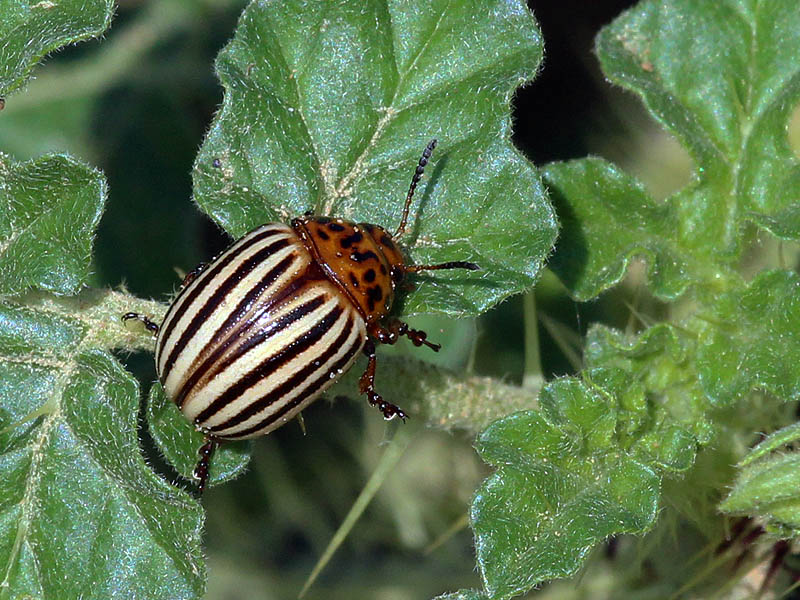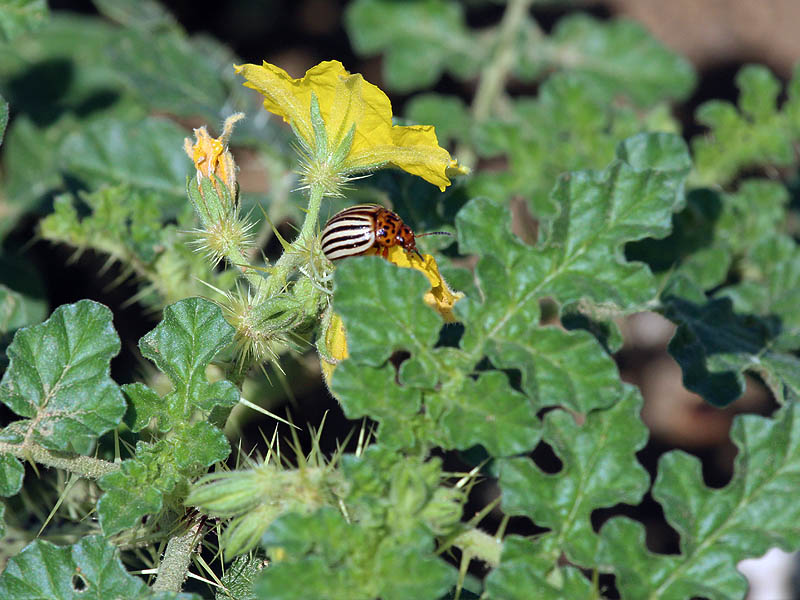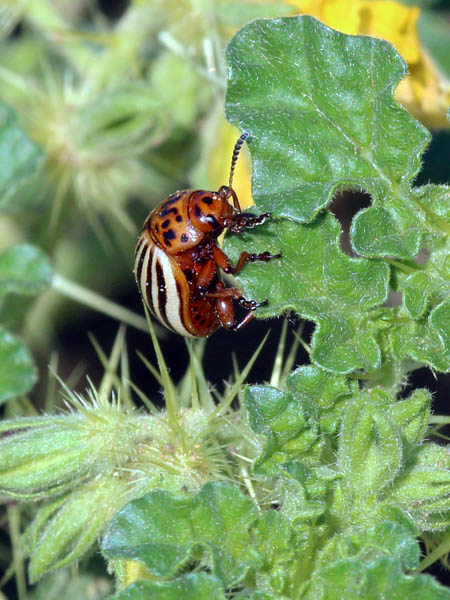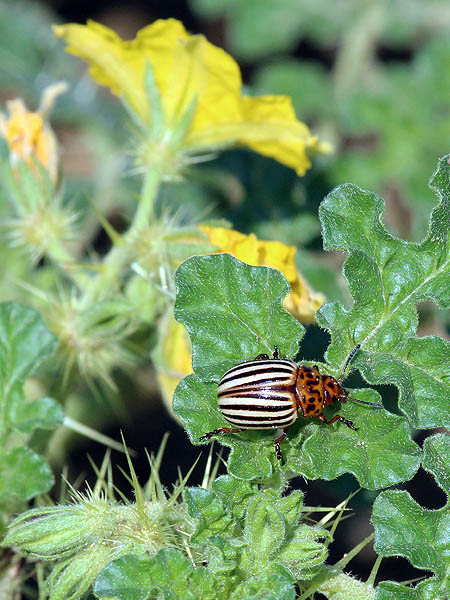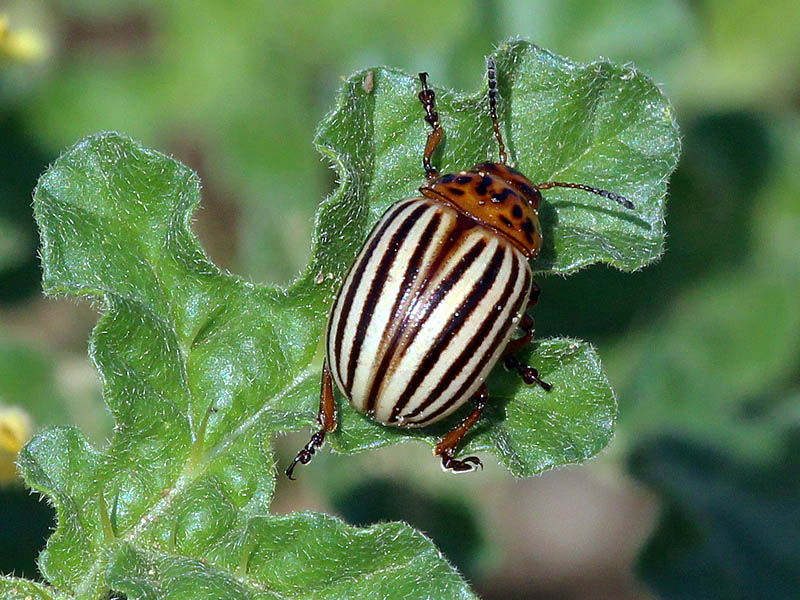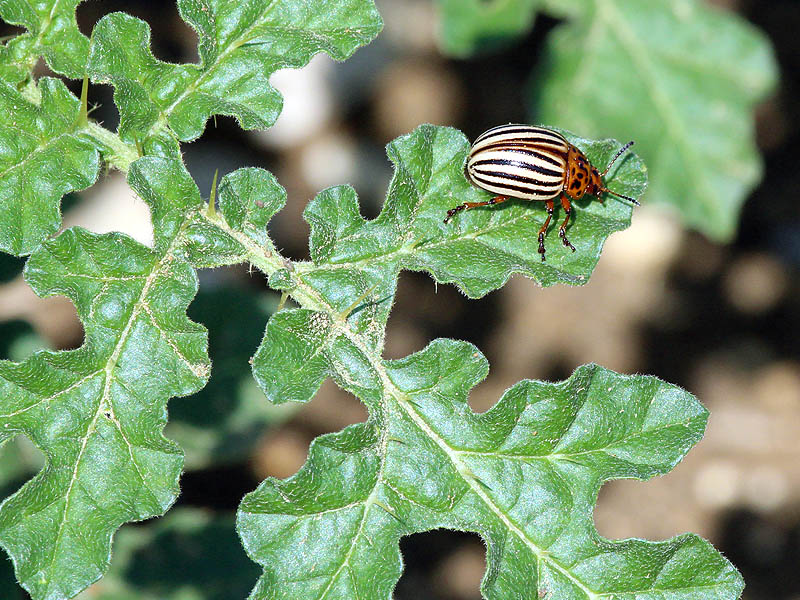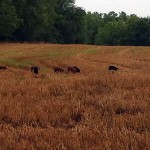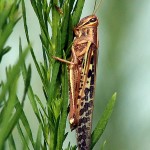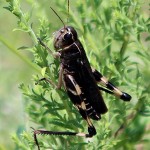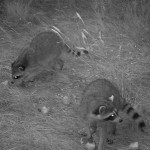This is a Colorado Potato Beetle feeding on a flowering Buffalo Bur in Little Elm near Lake Lewisville. The Colorado Potato Beetle’s two claims to infamy are the damage they do to potato crops, and the bug’s reported near invulnerability to common pesticides.
Here’s what Wikipedia has to say about the Colorado Potato Beetle:
The Colorado potato beetle (Leptinotarsa decemlineata), also known as the Colorado beetle, the ten-striped spearman, the ten-lined potato beetle or the potato bug, is an important pest of potato crops. It is approximately 10 millimetres (0.39 in) long, with a bright yellow/orange body and five bold brown stripes along the length of each of its elytra. It can easily be confused with its close cousin and look-alike, the false potato beetle.
The beetle was discovered in 1824 by Thomas Say from specimens collected in the Rocky Mountains on buffalo-bur, Solanum rostratum. The origin of the beetle is somewhat unclear, but it seems that Colorado and Mexico are a part of its native distribution in southwestern North America. In about 1840, the species adopted the cultivated potato into its host range and it rapidly became a most destructive pest of potato crops. The large scale use of insecticides in agricultural crops effectively controlled the pest until it became resistant to DDT in the 1950s. Other pesticides have since been used but the insect has, over time, developed resistance to them all.
